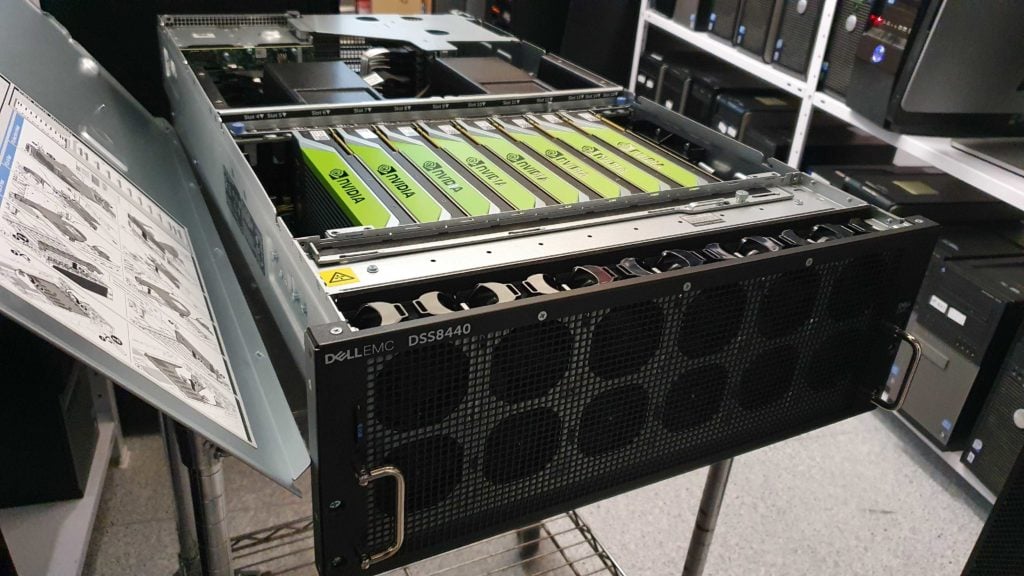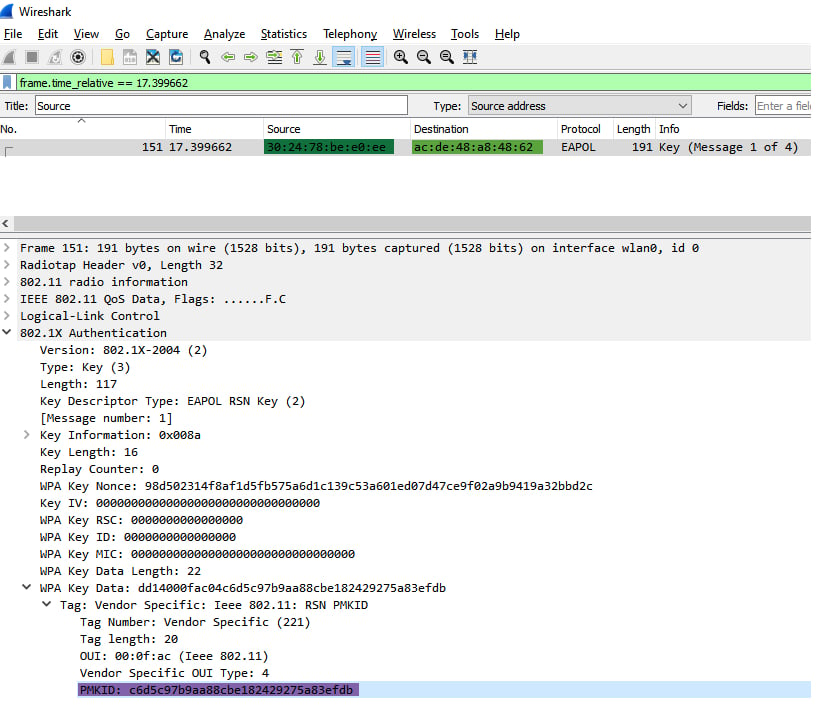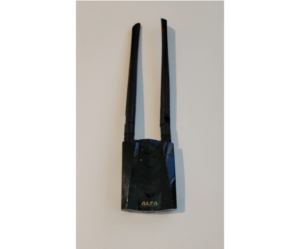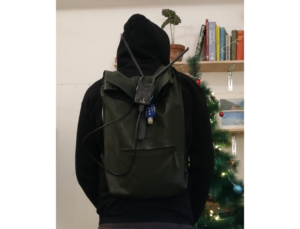
How I Cracked 70% of Tel Aviv’s Wifi Networks (from a Sample of 5,000 Gathered WiFi).
In the past seven years that I’ve lived in Tel Aviv, I’ve changed
apartments four times. Every time I faced the same scenario: the
internet company took several days to connect the apartment, leaving me
disconnected and frustrated while trying to watch laggy Netflix on the
TV with my cellphone hotspot. A solution I have to this scenario is
having the “Hello. I am the new neighbor” talk with the neighbors while
trying to get their cell phone number in case of emergencies — and
asking if I could use their WiFi until the cable company connected me. I
think we all can agree that not having internet easily falls into the
emergency category! Often, their cell phone number was also their WiFi
password!
I hypothesized that most people living in Israel (and globally) have
unsafe WiFi passwords that can be easily cracked or even guessed by
curious neighbors or malicious actors.
The combination of my past experience, a relatively new WiFi attack
that I will explain momentarily, a new monster cracking rig (8 x QUADRO
RTX 8000 48GB GPUs) in CyberArk Labs and the fact that WiFi is everywhere because connectivity is more
important than ever drove me to research, whether I was right with my
hypothesis or maybe just lucky.
With the continued shift to remote work due to the pandemic, securing
home networks has become imperative and poses a risk to the enterprise
if not done so. Home networks rarely have the same controls as
enterprise networks. And a security program is only as strong as its
weakest link.

Figure 1- CyberArk Labs new cracking rig
To test this hypothesis, I gathered 5,000 WiFi network hashes as my
study group by strolling the streets in Tel Aviv with WiFi sniffing
equipment. At the end of the research, I was able to break more than 70% of
the sniffed WiFi networks passwords with relative ease. The Tel Aviv
Metropolitan area has more than 3.9 million people — you can imagine
what the numbers would have been had we not cut our research off at
5,000 WiFi networks. And while this research was conducted in Tel Aviv,
the routers that were susceptible to this attack — from many of the
world’s largest vendors — are used by households and businesses
worldwide.
In this blog, I demonstrate how easily (you do not need a cracking
rig) and with little equipment unsecure WiFi passwords can be cracked,
thus hacking the WiFi network .At the end, we will reveal statistics of
the cracked hashes and explain how to defend your network from this type
of attack. Therefore, it is of utmost importance that we know and
understand the cracking method to form an adequate defense.
Before Jens “atom” Steube’s (Hashcat’s lead developer) research,
when a hacker wanted to crack a WiFi password, they needed to capture a
live four-way handshake between a client and a router occurring only during the establishment of the connection. Simply put, the attacker
would need to be monitoring the network at the time the user or device
connects to the WiFi network. Therefore, a hacker needed to be in a
physical location between the access point (router) and the client,
hoping that the user would enter the right password and that all four
packets of the handshake were sniffed correctly. If a hacker did not
want to wait until a victim establishes a connection (which can take
hours, who connects to their home network while they are at work?), the
attacker could de-authenticate an already-connected user to force the
victim to have a new four-way handshake.
Another attack vector is to set up a malicious twin network with the
same SSID (network name), hoping that the victim would try to log in to
the fake network. A major shortcoming of this is, of course, that it is
very noisy (meaning it can be easily traced) and can be easily noticed.
In simple English, if an adversary wanted to hack/crack a WiFi
password, they need to be in the right place (between users and a
router) at the right time (when users log in) and be lucky (users
entered the correct password and all four packets were sniffed
correctly).
All of this changed with atom’s groundbreaking research, which exposed a new vulnerability targeting RSN IE (Robust Security Network Information Element) to retrieve a PMKID hash (will be explained in a bit) that can be used to crack the target
network password. PMKID is a hash that is used for roaming capabilities
between APs. The legitimate use of PMKID is, however, of little
relevance for the scope of this blog. Frankly, it makes little sense to
enable it on routers for personal/private use (WPA2-personal), as
usually there is no need for roaming in a personal network.
To crack a PMKID, we first need to understand how it is generated.
How is PMKID hash generated and what elements does it contain

Figure 2- Flow of Calculating PMKID hash and PMK
The hash calculation might seem daunting at first glance but let us dive into it.
We need to generate a PMK driven from SSID (the network name) and the Passphrase; then we generate a PMKID driven from the PMK we generated, the AP MAC address, and the client MAC address. So let us see where we can find those:
The PMK is computed as follows:

Figure 3- PMK calculation
![]()
Figure 4 – SSID from a beacon
After a PMK was generated, we can generate a PMKID.
The PMKID is computed as follows:

Figure 5 – PMKID calculation
 Figure 6 – PMKID, AP’s MAC, Client’s MAC
Figure 6 – PMKID, AP’s MAC, Client’s MAC
Cracking the PMKID hash is ultimately just generating/calculating PMKs with the SSID and different passphrases, then calculating PMKID from the PMK and the other information we obtained. Once we generated a PMKID equal to the PMKID that was retrieved from the AP (Figure 3), the hash is cracked; the passphrases that were used to generate the right PMK that the PMKID was generated from is the correct WiFi password.
Now we know how a PMKID is being generated, and we can continue to the sniffing and cracking phases of our research.
To gather WiFi PMKID hashes, a wireless network interface
that has monitor mode capabilities is required. Monitor mode allows
packet capturing without having to associate with an access point.
I bought an AWUS036ACH ALFA Network card for $50 (there are even cheaper options) that supports monitor
mode and packet injection and went around the center of Tel Aviv to
sniff WiFis.
Before we can start the sniffing, we need to prepare our environment:
I used an ubuntu machine with AWUS036ACH ALFA.

Figure 7 – AWUS036ACH ALFA NIC
We build the package Hcxdumptool — a great utility by ZerBea to capture packets from WLAN devices.
After that, we need to install drivers with monitor mode capability. Each chipset has its drivers:
It is recommended to shut down services that might interfere with Hcxdumptool execution:
Then it is time to start sniffing. Hcxdumptool is a powerful tool that can be used for various attacks, not only the PMKID; therefore, we disable any attack that is not targeting PMKID.
Now wear a hoody, because you will get a PMKID of every network you cross by that is vulnerable to the attack.

Figure 8 – Me in a hoodie
When I reached 5,000 collected networks, I decided to quit; Israeli
summer was too hot for me, so I turned to the fun part — cracking.
Our first step in the cracking procedure is to install hashcat, the world’s fastest and most advanced password recovery tool. As the sniffing results are in the form of pcapng, we needed to convert them into a hashfile format to fit it to hashcat. For this goal, I made use of another tool from the great suite of hcxtools.
Resulting in a hashfile that each line takes on the following structure:
SIGNATURE*TYPE*PMKID/MIC*MACAP*MACSTA*ESSID* * *
Here is an example of a hashline:
WPA*01*c6d5c97b9aa88cbe182429275a83efdb*302478bee0ee*acde48a84862*54686557494649***
The next step is to commence the cracking procedure by executing hashcat:
Hashcat’s capabilities include several cracking methods, of which the
most common are dictionary + rules and mask attack. The methods differ
in the way they are forming the Passphrase.
We chose to start with what’s called a “mask attack,” due to the
terrible habit many people living in Israel have of using their
cellphone numbers as WiFi passwords. You can think of mask attack as
Regex:
The mask for the password: 202!$ummeR would become ?d?d?d?s?s?l?l?l?l?u
Here is my Hashcat command that tried all the possible cellphone
numbers combinations in Israel [the Israeli cellphone prefix is 05]
The cracking speed for hashtypes differs because of different hash
functions and the number of iterations. For example, PMKID is very slow
compared to MD5 or NTLM. Nonetheless, it is feasible to crack a PMKID
hash if the attacker focuses on a specific network, and the password is
not complicated enough.
Afterward, we executed a standard dictionary attack with the most common dictionary, Rockyou.txt, and cracked more than 900 hashes. Here is a small glimpse into Rockyou.txt content:
123456 12345 123456789 password iloveyou princess 1234567 rockyou
12345678 abc123 nicole daniel babygirl monkey lovely jessica 654321
michael ashley
Let’s look over the statistics of the cracked hashes:
Cracked passwords by their length:
| Password Length | Occurrences |
| 10 | 2405 |
| 8 | 744 |
| 9 | 368 |
| 12 | 14 |
| 11 | 14 |
| 14 | 7 |
| 13 | 7 |
| Sum | 3,559 |
As you can see, except for the 10-digit password
— which we had a tailored mask for — as the password length increased,
the number of cracked passwords decreased. The lesson here? The longer
the password, the better.
Top 4 masks for the cracked passwords:
| Mask | Occurrences | Meaning |
| Mask | Occurrences | Meaning |
| ?d?d?d?d?d?d?d?d?d?d | 2349 | 10 digits |
| ?d?d?d?d?d?d?d?d | 596 | 8 digits |
| ?d?d?d?d?d?d?d?d?d | 368 | 9 digits |
| ?l?l?l?l?l?l?l?l | 320 | 8 lower case letters |
| Sum | 3,633 |
We can see that cracked passwords most often fit a mask that contains only digits or only lower-case characters.
Not all routers support roaming features and are, therefore, not
vulnerable to the PMKID attack. However, our research found that routers
manufactured by many of the world’s largest vendors are vulnerable.
As I estimated beforehand, the process of sniffing WiFis and the
subsequent cracking procedures was a very accessible undertaking in
terms of equipment, costs and execution.
The bottom line is that in a couple of hours and with approximately
$50, your neighbor or a malicious actor can compromise your privacy and
much more if you don’t have a strong password.
In total, we cracked more than 3,500 WiFi network in and around Tel Aviv – 70% of our sample.
The threat of a compromised WiFi network presents serious risk to
individuals, small business owners and enterprises alike. And as we’ve
shown, when an attacker can crack more than 70% of WiFi networks in a
major global city with relative ease, greater attention must be paid to
protecting oneself.
At the most basic level, people who use your network take part of
your bandwidth, which may slow down your internet experience. However,
more consequential is that once attackers gain access to your network,
they can launch various man-in-the-middle (MITM) attacks. That can lead
to attackers gaining access to your important accounts, such as your
bank account, your email account (which is everything in modern life)
and compromising other sensitive credentials. This also further opens
attack vectors to your IoT devices like smart home equipment, smart TVs,
security systems, etc.
For the small business, the risk lies in an attacker infiltrating a
network and then moving laterally to high-value applications or data,
such as a billing system or cashier.
Concerning the enterprise, it’s possible for an attacker to gain
initial access to a remote user’s WiFi and then hop to the user’s
computer and wait for a VPN connection or for the user to go to the
office and move laterally from there.
From a broader perspective, computers and other devices are usually
not accessible from outside of the network because of NAT, but once an
attacker is in the network, it facilitates a range of attack vectors.
How should I protect myself?
It’s important to note that implementing multi-factor authentication (MFA) for personal WiFi is difficult and largely impractical for a personal
WiFi and a non-technical consumer. It is also unlikely that MFA will be
widely available for general consumer use cases in the near feature.
I would like to give a big shout-out to Atom and ZerBea for their incredible work on this attack technique and for their work in general.
I hope you enjoyed this blog and that you will take the required
steps to secure your WiFi network. And as a reminder, none of the
passwords we cracked were used for unauthorized access to these WiFi
networks or any other information accessible via these networks.